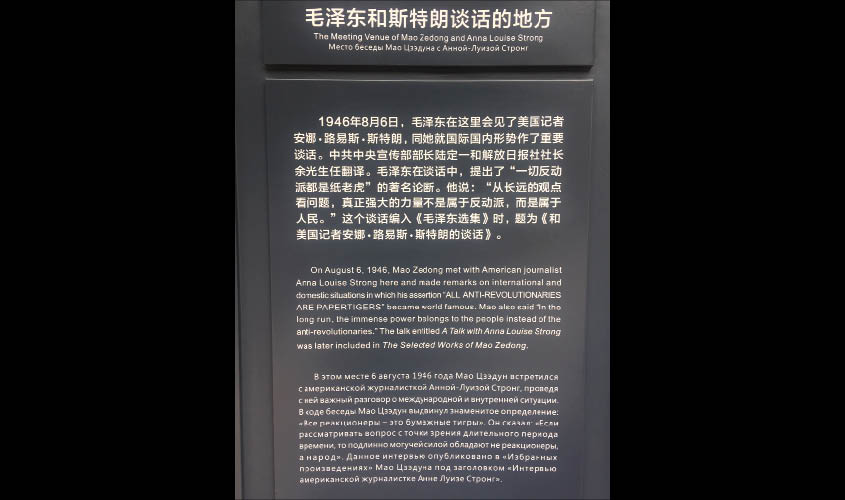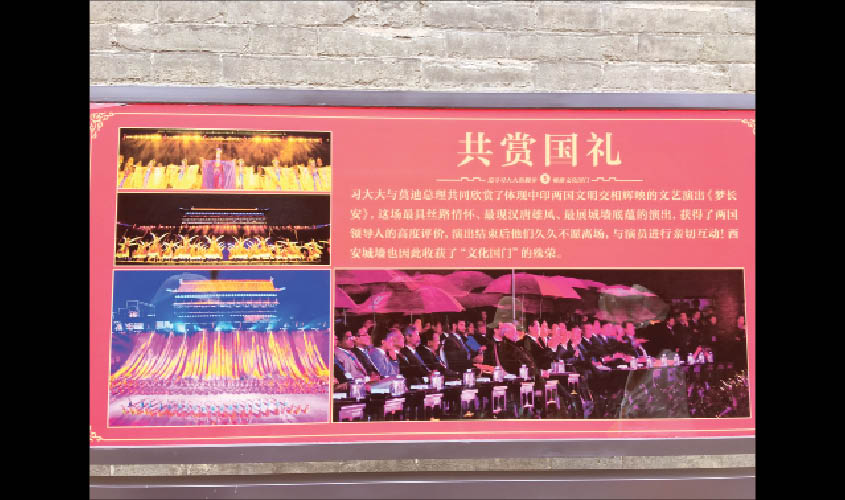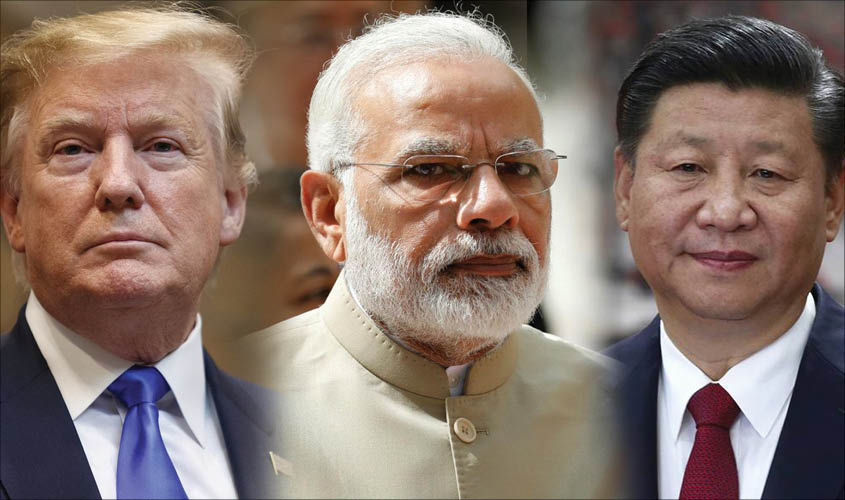In the case of US, India needs to be forthcoming on security matters, while being tough on commercial issues. In the case of China, India needs to be firm on matters concerning security, while ensuring leeway in purely commercial fields.
Yanan, China: The clay mountains of Shaanxi province are a universe away from New Delhi, where US Secretary of State Mike Pompeo is visiting, 25-27 June. The Global War on Terror (GWOT) is expected to figure high on Pompeo’s agenda in a context where there is disappointment in Washington about India not matching its tough words on terror with action on the ground in most theatres where terror groups that are clones of ISIS are active. Apart from not signing BECA (Basic Exchange and Cooperation Agreement) as yet, India is still considering the purchase of S-400 systems from Russia, a purchase that would doom future hi-tech cooperation between the US and India in the joint development of weapons platforms. Such US-India cooperation is especially welcome in the context of the fullscope manner in which China is developing Pakistan as a manufacturing hub for military aircraft, missiles and nuclear technology, while still blocking India’s entry into the Nuclear Suppliers Group. For this to happen, the S-400 bullet needs to be bitten and fast by India. After that, field cooperation could begin in Afghanistan and other theatres where terror groups are active. A robust security relationship with the US will assist in recruiting the Pentagon, the CIA and the State Department as allies against the US Trade Representative and the US Department of Commerce, both of whom wear outsize blinkers as they seek to implement measures that would destroy much of the small retail trade in India to the benefit of US tech giants. The USTR seems to feel little compunction in pressing for concessions on pharma and health pricing that would benefit a handful of US and European billionaires at the cost of tens of thousands of lives in India’s zone of poverty. In the case of the US, collaboration on matters of defence and security is desirable, while conceding to US demands on commercial matters is not. In the case of China, the situation is different. However, the fact that India will be the first country that President Xi Jinping visits after the 70th anniversary of the founding of the People’s Republic of China is significant. Those close to him say that Xi, who enjoys a good rapport with Narendra Modi, is seeking a return to the early 1950s period of a close rapport between China and India. Of course, during that period, it was India that gave almost all the concessions. This time around, as much the bigger power, it is China’s turn to be generous to a country that can emerge as its biggest market in Eurasia in the years ahead. The importance that China under Xi is giving to Modi can be gauged from the fact that the traditional heart of China, Xian, has been visited by such notables as Presidents Bush and Obama, yet the only pictures on the City Wall are those of Xi and Modi. In Wuhan as well, the Lake Guest House has pictures of the Prime Minister all over the surroundings and inside the Guest House.

ALL PHOTOS: LI LI
Chinese authorities will be watching closely the signals emanating from Delhi on the Pompeo visit. They are now certain that the Trump administration is determined to roll back Chinese influence through downsizing economic growth. In such a context, the Indian market is a tempting prize. However, for the potential for India-China economic and commercial relations to be fully realised, Beijing will need to give more attention towards India’s core concerns than has been the case thus far.
EMPHASIS ON MAO
Such calculations seem a world away from the mountain redoubt (where Chairman Mao Zedong sheltered for close to a decade during the war between the People’s Liberation Army and the Japanese). The hillsides are covered with trees planted since the 1980s. During the 1930s, the mountainsides were bare, offering targets to the Japanese air force as they dropped bombs on the dwellings carved out of the clay soil of the mountains. In the Soviet Union, Stalin’s successor Nikita S. Khruschev swiftly repudiated the legacy of the man who had dominated the USSR since the death of Lenin in 1924 till his death in 1953. This was despite the fact that Khruschev was a favourite of Stalin, who had repeatedly promoted the corpulent apparatchik in his climb to the top of the Communist Party of the Soviet Union (CPSU). In contrast, Deng Xiaoping, who soon emerged as the effective successor to Mao on the latter’s death in 1976, was several times punished by Mao, especially during the Cultural Revolution (1966-76). Despite this, Deng paid homage to Mao’s memory, aware that any effort at downsizing his role would damage the image of the Chinese Communist Party (CCP) the way Khruschev’s 1956 recital of Stalin’s despotic nature had the unintended effect of forever destroying the legitimacy and historical resonance of the CPSU. Since his assumption of office as General Secretary of the CCP in 2012, Xi Jinping has promoted a renaissance of “Mao Thought”, pointing to the manner in which the first leader of the People’s Republic of China (PRC) unified the country and made it a global force despite widespread poverty. Around the year, Chinese citizens come to Yanan to experience the surroundings (albeit far more leafy than before) in which Chairman Mao wrote some of his most important treatises and drew up strategies to confront the Japanese, while keeping at bay the forces of the Kuomintang (KMT) led by Generalissimo Chiang Kai-Shek. It was during the Yanan years that Mao emerged as supreme within the CCP, a position that he retained until his passing. Xi has patterned himself in Mao’s mould, working on policies that would project the PRC as not simply a Great Power but in time, the world’s most consequential country. In order to achieve this, he has placed emphasis on both a strong defensive as well as technological foundation.

BEIJING MODEL CHALLENGES WASHINGTON CONSENSUS
However, there is already a superpower that has remained pre-eminent at least since the start of the 1939-45 war, and this is the United States, now led by its 45th President, Donald J. Trump. While the slogan of the billionaire-turned-politician is “Make America Great Again”, as the US is already a great country, what is probably meant is to “Keep America First”, rather than allow China to walk away with that prize. The battle between the USSR and the US was a contest between two systems, an economic model dominated by private industry that was adopted by policymakers in Washington, as opposed to the model where the state occupied the commanding heights, such as the case with the USSR and of course India under Jawaharlal Nehru and later Indira Gandhi. To this day, successive governments in India have been reluctant to let go of the privileges accruing to the policymaking establishment that flow with state control of a range of enterprises and resources, a chokehold maintained in the name of “public interest”. China is no exception. State-owned enterprises (SOEs) dominate much of the economy, although in recent days, the fact has dawned on the CCP core leadership that the private sector in China needs to be given more equitable treatment in view of the Trade War that has been ongoing with the US for the past year. China needs many more entrepreneurs such as Jack Ma and Ren Zhengfei if the country is to escape the constrictions that current US policy is seeking to enforce on its economy. Mao gave stress to two principles: that (a) China would always win over its foes and (b) that the battle would not be easy, but long and arduous, and the Chinese people are being prepared by Xi Jinping to face a long and difficult battle against the efforts of the US to weaken a system that has made China just a few steps away from overtaking the US as the world’s biggest economy. The battle between the Soviet and the US systems ended with the meltdown of the USSR in 1992, although long before that, it was clear that Central Planning was not working where living standards were concerned. Since the initial years of the 21st century, the world is once again witnessing a battle between two systems, the Chinese and the American. The Beijing Model is challenging the Washington Consensus. Once China overtakes the US in Gross National Product, the consequences for US soft power would be profound. Among the first casualties would be the US dollar, which would witness an acceleration away from it as the global currency of choice. US companies would no longer be able to set the terms of engagement with foreign companies the way they have been doing since 1945, despite the military disasters of Vietnam, Afghanistan and Iraq.

What is taking place between the US and China is not just about trade deficits or surpluses. It is about whether the US system will continue its dominance over the economies of the globe or fall behind China’s. The somewhat misleadingly labelled “Trade War” will continue for a considerable period of time, until one or the other system gives way to the other in terms of global reach and influence. Will the US dollar remain the dominant global currency, giving the US President the power to choke to near death the financial systems of countries that refuse to follow his diktats, for example that good quality and affordably priced oil from Iran should not be bought by India? Will the global supply chains for services and even manufactures be dominated by US logistics and commodity hubs? Will US soft power remain far ahead of its competitors the way it is in a world where US brands such as KFC, Pepsi or McDonald’s are ubiquitous despite doing nothing positive for the health of their customers? Will the switchboards of the internet remain almost entirely in US hands, so that a country of a billion plus people such as India has become the digital monopoly of Amazon, Facebook, Google or Twitter? President Trump cannot be faulted for seeking to slow down China’s rise in a manner that none of his predecessors dated to attempt, but in PRC President Xi Jinping, he has met a formidable opponent, who is determined that this is a war that Beijing and not Washington will win. Each of the swelling number of Chinese visitors to Yanan are there to get reminded of an earlier period in their country’s history when what seemed a hopeless struggle ended within a decade in a rout for the other side. Of course, in the conflict against Japan, both Mao and Roosevelt were on the same side, as many smiling photographs of US delegations visiting Mao and Zhou Enlai in their clay dwellings testify to. From the late 1960s onwards, it was the USSR that was the principal rival, and in the 1970s, China and the US once again allied with each other, this time to battle not Tokyo but Moscow. Now that Washington has emerged as the most potent challenger to what Xi terms the “Chinese Dream”, once again it is Moscow that has become the closest ally, with Vladimir Putin and Xi Jinping forming a Sino-Russian alliance that will soon cast a shadow across all of Europe and Asia. Both Moscow and Beijing seek to draw New Delhi into this grouping so as to ensure that a Washington-Delhi nexus does not take place that would have its ripple effects across both the seas of the Indo-Pacific as well as the Eurasian landmass, and it is expected that there will be much cordiality on display by both Putin and Xi when Narendra Modi heads to Tokyo for the G-20. Of course, while there, Modi is certain to meet not just the Russian and Chinese leaders, but Shinzo Abe and Donald Trump as well. Lutyens Zone strategists have talked about a “balancing act” between the two superpowers (the PRC and the US). Balancing on a wall has greater risk than playing hopscotch, where India jumps from one side to the other and back, depending on the need and the circumstance. That would be a much more difficult diplomatic game to play than the sterile construct of “balance” (or in other words, non-alignment), but also much more rewarding for the interests of this country. For both the US and China, India would need to differentiate the security parameters from the merely commercial. In the case of the US, India needs to be forthcoming on security matters while being tough on commercial issues. In the case of China, what is needed is to be firm on matters concerning security while ensuring leeway in the purely commercial fields.

UNPRECEDENTED DEXTERITY NEEDED
Prime Minister Modi, assisted by External Affairs Minister S. Jaishankar and NSA Ajit Doval, will need to play a dexterous hand in the diplomacy that he is engaged in between Xi Jinping and Donald Trump. For the former, the path can be cleared for Chinese investment in India, including in 5G networks if the Huawei bid is competitive. Infra projects can be taken up, both in India as well as in the region. Tourism can be multiplied manifold. In the case of the US, India needs to reinforce its commitments in the Global War on Terror by ramping up its activities even while the US assists in building up its capabilities. Given the geopolitical situation, a move away from Russian to US defence platforms is desirable, indeed inevitable. This will be among the difficult decisions that will need to be taken by Prime Minister Modi within the year, so as to set the economy on a glide path to double digit growth, while building India’s capacities in matters of defence and security. The world is entering into a period when China, the US and India (followed by Russia) will be the most consequential of the world’s countries. The 1950s were a period of missed opportunities for India. That dismal history should not get repeated during the coming decade.

